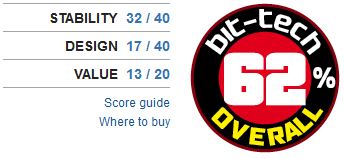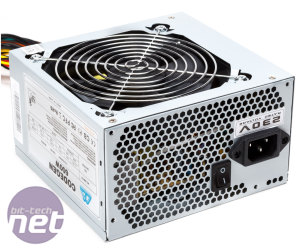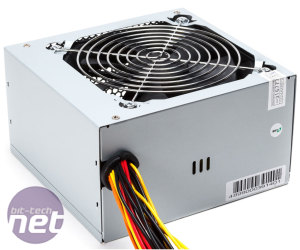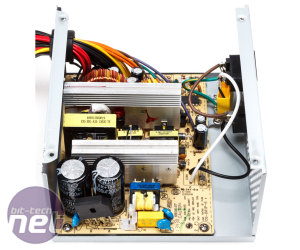
Codegen Super Power 600W Review
Manufacturer: CodegenUK: Approx. £30 (inc VAT)
Most of the models in this test will set you back between £60 and £80, which may lead you to wonder why you should spend that much hard-earned cash on what is ostensibly the dullest part of your rig. After all, you could also pick up, say, a Codegen Super Power 600W for a mere 27 of your finest English pounds (or something similar, as since testing this PSU no longer appears to be on sale here), right? Well, of course you could, but all you’d be doing is inspiring your great-auntie to admonish you not to be penny-wise and pound-foolish – don’t look at us, we'd tell you she has you dead to rights.
However, let’s say you want to save £30 or £40 and let us consider then, the unrated Codegen Super Power 600W. We’ll start by examining the claimed output power. In fact, even though it's a dual-rail design, it's only rated to deliver about half the stated wattage to 12V components, with 12 amps at one 12V rail and 14 amps at the other (312W total). The rest, presumably, is reserved for the 3.3V and 5V rails, which as we already wrote are barely used in modern systems.
Of course, at this price we won’t quibble over the lack of modular cabling, and it will come as no surprise the cables are all unsleeved. However, we do feel obliged to point out that you get only two molex and four SATA connectors (the lowest amounts in the test) as well as just a single 6-pin PEG connector. An 8-pin CPU plug is also conspicuously absent, so this PSU is rather restrictive in what you can use with it. Separately worthy of note is the length of the motherboard, 4-pin CPU and PEG cables: just 34cm (13.5 inches) at most. Many competitors offer double this, with the next shortest cable in a competing model coming in at 20 inches. Credit where credit’s due, however - the SATA cables are sufficiently long.
Now, to the test results. Up to a load of 300 watts we see decent enough stability and acceptable ripple – at 300W, the voltages dip a little below 12V, but nothing too problematic. Once we pass 300W load however, performance takes a nosedive: ripple increases sharply and the voltages plummet, dropping to 11.25V at 500W on the 12V1 reading, which is below the ATX mandated minimum of 11.4V. Even the 5V rail struggles, climbing to 5.31V in this same test, which is again a fail, as 5.25V is the limit here.
That was about the time we stopped the test, as smoke coming out of the PSU is rarely a sign that something good is about to happen – you'll have to forgive us for not providing efficiency and ripple figures for a 500W load and any results for a 600W load; we would advise you to watch a Game of Thrones episode if you’re keen on images of destruction that do not endanger our expensive testing equipment. Back to the Codegen: maximum stable load according to our measurements is 400W at most. Average efficiency comes to all of 72.58%, meaning this supposedly cheap PSU will be more expensive a few years down the road, even if it doesn't blow up and destroy the rest of your rig. By that point you would also be slightly deaf, as even at low loads, this unit already produces 45 dB(A), ramping up to 50 dB(A) at 300W. Steer well clear.


MSI MPG Velox 100R Chassis Review
October 14 2021 | 15:04












Want to comment? Please log in.